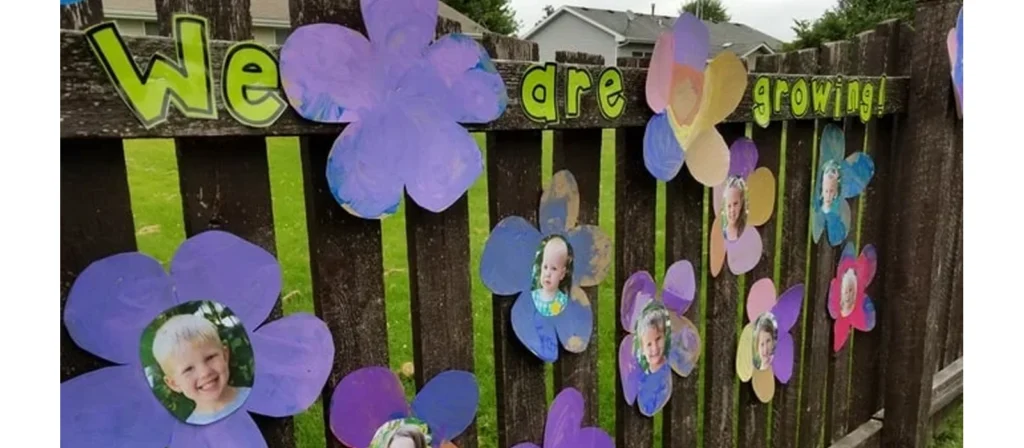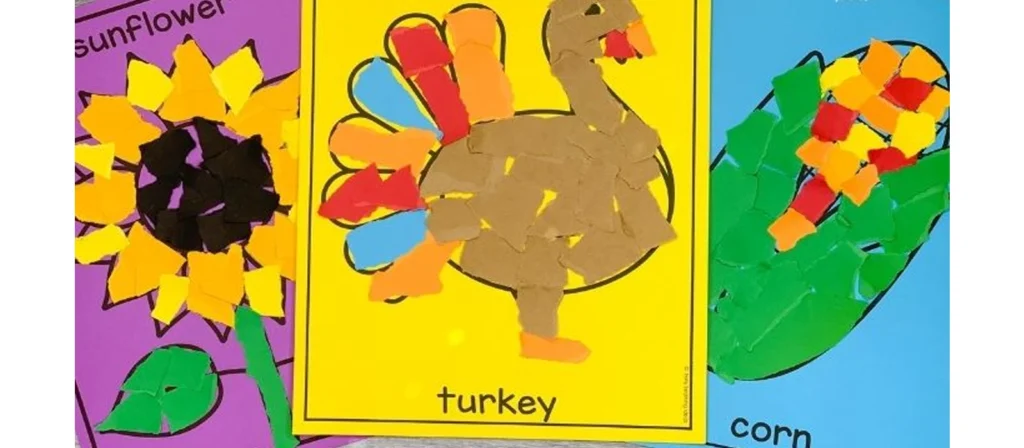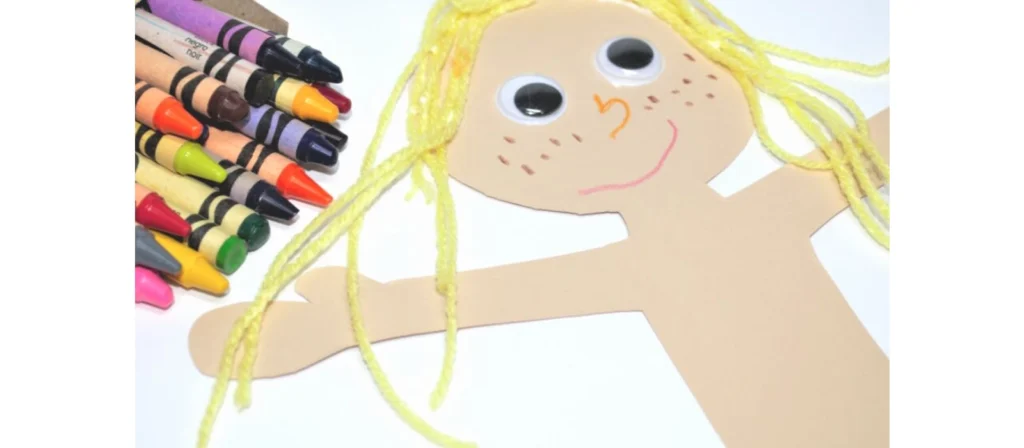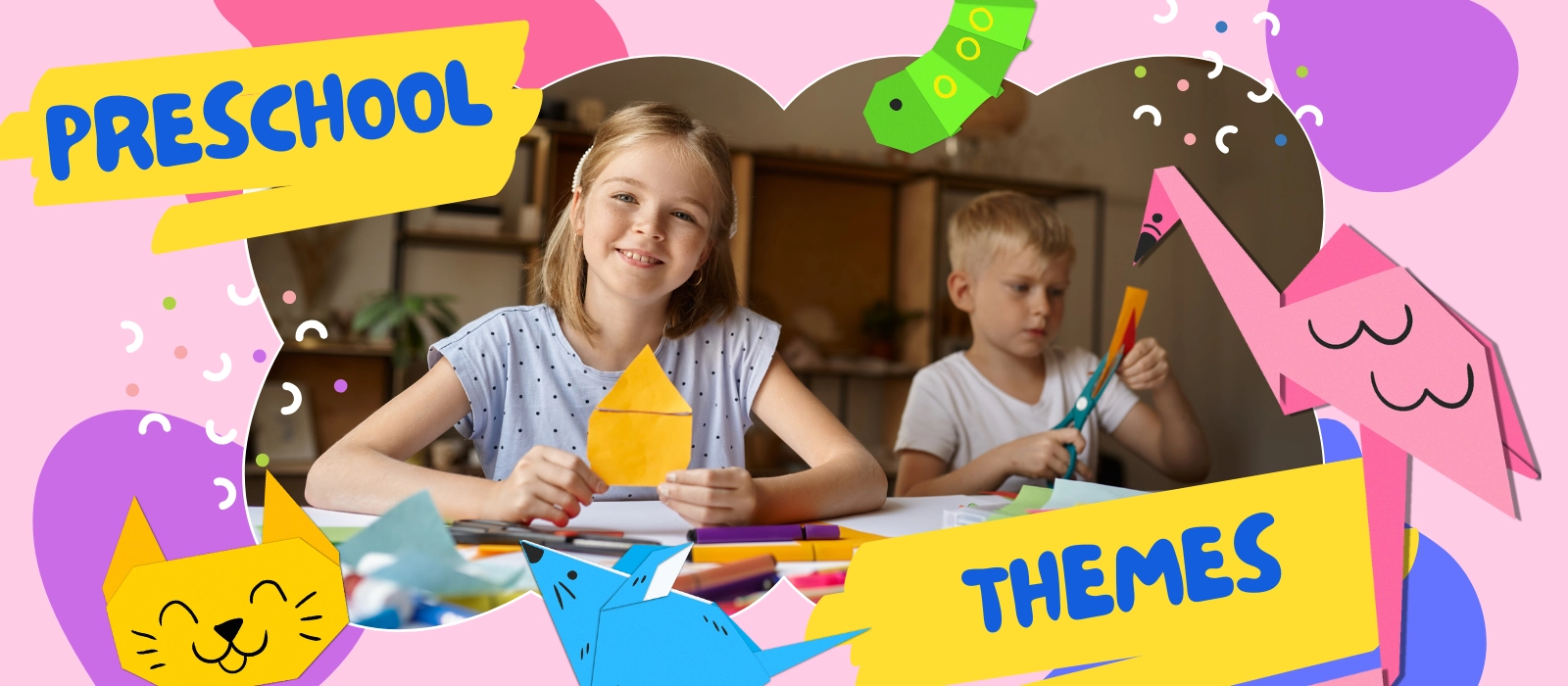Are you tired of repeating the same preschool themes every year? Do your students lose interest halfway through a month-long topic? Are you struggling to connect your themes with actual learning goals while still keeping your classroom fun, colorful, and child-centered?
Preschool themes are more than just fun decorations or holiday tie-ins—they’re a powerful teaching strategy. A well-chosen theme integrates literacy, math, science, social-emotional learning, and art into one cohesive experience. It gives children context, repetition, and excitement. By organizing your lesson plans around purposeful preschool themes—like “Community Helpers,” “Ocean Life,” or “All About Me”—you create structure and meaning. Themes also make classroom management easier, because children know what to expect and can engage more deeply in the subject matter.
With that in mind, let’s look at 50 of the most engaging and educational preschool themes you can use throughout the year—complete with classroom ideas, decorations, and lesson plan tips.
Why Preschool Themes Matter
Preschool themes form the backbone of early childhood education because they create an organized framework that helps young children make sense of the world. Children at this age learn best through exploration, repetition, and meaningful connections. When you use a theme, you’re not just teaching facts—you’re providing context.
For example, teaching shapes through a generic worksheet might not be memorable. But teaching shapes during a “Construction” theme, using blocks and signs, creates relevance. Themes help children link abstract concepts to real-life experiences. They make learning concrete.
From a curriculum planning standpoint, themes make it easier to align activities with early learning goals across subjects. A theme like “Weather” can include counting raindrops in math, drawing clouds in art, reading weather books during storytime, and observing real weather outside.
Classroom routines also benefit. Themes bring consistency to the classroom experience. If Monday starts the “Ocean” theme, the whole classroom becomes a cohesive learning environment—books, songs, centers, art, and circle time all revolve around ocean animals and concepts.
For teachers, this integration is efficient. One central theme can spark ideas for reading, writing, fine motor, gross motor, dramatic play, and more. And for students, the repetition and reinforcement across subjects deepen learning and language development.
Lastly, themed classrooms are joyful. Themed environments stimulate the senses and invite curiosity. Whether you’re decorating for “Bugs and Insects” or “Outer Space,” children light up when the classroom transforms into a new world.
Themes matter because they make learning meaningful, structured, memorable, and fun—which is exactly what preschool should be.
Seasonal Preschool Themes
Preschool themes that follow the seasons are easy to align with children’s natural experiences. As the weather changes, so do the sights, sounds, and events around them. This makes seasonal preschool themes perfect for encouraging observational skills, vocabulary building, and real-world understanding.

Spring Themes
Spring is a season of growth, change, and discovery. It’s the perfect time to introduce science themes like plants, weather, and insects. Children are naturally curious about bugs, flowers, and the rain.
- Gardening Theme: Teach parts of a plant, seed-to-flower cycles, and incorporate planting activities in the classroom. Perfect for fine motor skills and science exploration.
- Insects & Bugs Theme: Focus on butterflies, bees, ants, and ladybugs. You can use songs, crafts, and books to support vocabulary like wings, thorax, and pollination.
- Weather Theme: Introduce wind, rain, clouds, and sunshine. Set up a weather chart for daily use and pair it with books and experiments like rain jars.
- Easter/Spring Holidays: Tie in cultural celebrations with themed crafts and storytelling.
Summer Themes
Summer-themed preschool activities are full of water play, nature exploration, and outdoor excitement. These themes are bright, fun, and full of movement.
- Ocean & Beach Theme: Explore sea creatures, sand and shells, and underwater habitats. Use sensory bins with blue water beads and seashells.
- Camping Theme: Build tents in dramatic play, sing campfire songs, and talk about animals you might find in the woods.
- Ice Cream Theme: A favorite among toddlers! Use pretend play, ice cream shop role-play, and color sorting with paper scoops.
- Fourth of July/Patriotic Theme: Perfect for U.S. classrooms—flags, fireworks, and discussions about community and celebration.
Fall Themes
Fall offers a cozy, sensory-rich experience for preschoolers. Themes focus on change, community, and harvest.
- Apples Theme: Count, sort, taste-test different varieties, and make apple prints.
- Pumpkins Theme: Explore sizes, seeds, and use pumpkin guts for sensory play. Ideal for October.
- Harvest/Fall Leaves: Study changing colors, leaf shapes, and why trees shed their leaves.
- Fire Safety Theme: Teach stop-drop-roll, introduce fire trucks and community helpers.
- Thanksgiving/Gratitude: Talk about family, sharing, and community. Create thankful trees and family drawings.
Winter Themes
Cold weather brings magical learning opportunities, especially indoors. Winter themes can center around science, culture, and creativity.
- Snow & Ice Theme: Learn about snowflakes, ice melting experiments, and use shaving cream for snowy sensory bins.
- Hibernation Theme: Teach about animals that sleep in winter, like bears. Create cozy caves in reading corners.
- Winter Holidays: Explore Christmas, Hanukkah, Kwanzaa, and New Year’s traditions from around the world.
- Gingerbread Theme: Use gingerbread men for counting, stories, and shape recognition.
Seasonal themes work well because they naturally align with what children are seeing and feeling. Plus, they make it easier to decorate your preschool classroom in ways that reinforce learning and spark interest.
Monthly Preschool Themes
Monthly preschool themes help educators plan a balanced, exciting curriculum that fits with holidays, seasons, and developmental stages. They also simplify lesson planning by giving structure to each month’s learning goals.

January Preschool Themes
- Winter Weather – Explore snow, ice, and frost.
- New Year Celebrations – Focus on traditions and fresh starts.
- Hibernation and Animals in Winter – Perfect for science and storytelling.
February Preschool Themes
- Valentine’s Day & Friendship – Teach kindness, love, and emotions.
- Dental Health Month – Introduce brushing, dentists, and clean teeth.
- Black History Month – Age-appropriate cultural heroes and inclusion.
March Preschool Themes
- Weather & Rainbows – Teach water cycles, clouds, and color recognition.
- St. Patrick’s Day – Green, gold coins, leprechauns, and clovers.
- Plants Begin to Grow – A lead-in to gardening.
April Preschool Themes
- Spring & Flowers – Nature walks, planting seeds.
- Insects & Earth Day – Reduce, reuse, recycle for preschoolers.
- Easter – Crafts and egg hunts (adjust for cultural context).
May Preschool Themes
- Community Helpers – Police, doctors, firefighters, and mail carriers.
- Mothers & Families – Celebrate love and family units.
- Butterflies & Life Cycles – Caterpillar to butterfly activities.
June Preschool Themes
- Camping & Nature – Outdoor play, camp songs, forest animals.
- Summer Safety – Water safety, sunscreen, staying cool.
- Fathers & Families – Tie-ins with Father’s Day.
July Preschool Themes
- Ocean Life – Explore shells, fish, sharks, and coral reefs.
- Fourth of July (U.S.) – Red, white, and blue crafts.
- Ice Cream Theme – A deliciously fun topic.
August Preschool Themes
- All About Me – Self-awareness, names, family, feelings.
- Back to School – Classroom rules, new friends, school routines.
- Colors & Shapes – A foundation theme for the school year.
September Preschool Themes
- Apples & Trees – Taste tests, counting seeds.
- Fall Changes – Leaves, weather, daylight.
- Manners & Rules – Classroom behavior and respect.
October Preschool Themes
- Pumpkins – Carving, sensory bins, seed counting.
- Fire Safety Week – Firefighters, fire drills, safety skills.
- Halloween – Spooky fun that’s still age-appropriate.
November Preschool Themes
- Thanksgiving & Gratitude – Sharing, family, giving thanks.
- Native American Heritage – Simple cultural appreciation.
- Harvest & Scarecrows – Corn, pumpkins, wheat fields.
December Preschool Themes
- Winter Holidays Around the World – Diverse traditions.
- Snow & Arctic Animals – Penguins, polar bears, igloos.
- Gingerbread & Baking – Math, fine motor, and storytelling.
These monthly preschool theme ideas make planning smoother and allow for natural integration of learning objectives, classroom decor, and family engagement.
Thematic Units by Subject
Subject-based thematic units provide a way to integrate specific learning domains across all classroom activities. These themes target core areas like science, social studies, language, and social-emotional development while still being fun and age-appropriate. Below are some highly effective subject-focused preschool themes:

Science Themes
- Five Senses: Let children explore taste, touch, sound, sight, and smell with hands-on activities like scent jars or texture walks.
- Space Theme: Learn about planets, the moon, and astronauts. Use glow-in-the-dark stars and create a pretend rocket ship in dramatic play.
- Weather Theme: Observe clouds, measure rainfall, talk about sun and snow. Tie in real weather tracking and related storybooks.
- Plants & Growing: Introduce seed planting, growth charts, and vocabulary like roots, soil, and sun.
- Animals & Habitats: Explore forest, ocean, jungle, and arctic animals. Create sensory bins or dramatic play centers for each habitat.
Social Studies & Community Themes
- Community Helpers: Discuss jobs like firefighters, doctors, and mail carriers. Invite real helpers to visit the classroom.
- Transportation: Teach about cars, buses, trains, and planes. Create tracks and vehicle sorting activities.
- All About Me: Focus on identity, family, emotions, and body parts. This is great for building self-awareness and classroom community.
- Holidays Around the World: Introduce global traditions using crafts, foods, and songs from different cultures.
- Our Neighborhood: Map the school’s surrounding area and highlight local places of interest.
Language & Literacy Themes
- Nursery Rhymes: Classic rhymes enhance rhyme recognition, vocabulary, and phonological awareness.
- Alphabet Adventures: Focus on a letter a week using books, crafts, and movement.
- Fairy Tales & Storybooks: Use traditional stories for role-play, comprehension games, and sequencing activities.
- Library & Book Week: Create a book-themed classroom and invite guest readers to foster love for reading.
Social-Emotional Themes
- Friendship: Teach kindness, inclusion, and communication skills. Use puppet shows and social stories.
- Feelings & Emotions: Use mirrors, emotion cards, and stories to teach how to identify and manage emotions.
- Manners: Role-play scenarios about politeness, waiting turns, and saying please and thank you.
- Family & Home: Talk about different family structures, cultures, and traditions.
Physical Development & Health Themes
- Healthy Bodies: Teach about nutrition, hygiene, and exercise. Use songs about brushing teeth and eating vegetables.
- Movement & Exercise: Build obstacle courses, do yoga, and encourage outdoor play.
- Safety & First Responders: Teach basic safety concepts and introduce helpers like police officers and paramedics.
- My Body: Introduce body parts and their functions with songs, movement games, and anatomy puzzles.
These subject-based preschool themes are essential for building foundational knowledge in key developmental areas. When used effectively, they create a well-rounded, interdisciplinary learning experience that resonates with both students and parents.
Unique and Fun Preschool Theme Ideas
While traditional themes are important, sometimes the most memorable and engaging preschool experiences come from unexpected, fun, and creative ideas. These unique preschool themes spark imagination, laughter, and active participation. They are perfect for boosting engagement mid-year or adding variety to your curriculum.

Superhero Theme
- Encourage bravery, kindness, and helping others.
- Design superhero masks and capes during art time.
- Read books about everyday heroes and create obstacle courses as “hero training.”
Dinosaur Theme
- Explore fossils, dino types, and extinction.
- Set up a digging station with sand and plastic bones.
- Learn dino-related vocabulary like herbivore, carnivore, and paleontologist.
Circus Theme
- Introduce juggling, clown costumes, and animal acts.
- Use gross motor activities like balancing beams and tossing games.
- Make tickets, posters, and even host a “circus day” in class.
Pirate Theme
- Map reading, treasure hunts, and boat crafts.
- Focus on vocabulary like compass, parrot, and treasure.
- Create dramatic play areas with pirate hats, hooks, and eye patches.
Jungle Safari Theme
- Discover jungle animals, plants, and sounds.
- Make binoculars from toilet paper rolls and go on “safari” walks.
- Create a jungle mural and practice animal movements.
Pet Theme
- Learn about pet care and types of pets.
- Role-play being a veterinarian.
- Read pet-themed books and create pet adoption corners.
Under the Sea Theme
- Explore sea animals, coral reefs, and ocean zones.
- Build underwater scenes with blue cellophane and fish crafts.
- Incorporate bubble wrap for sensory play.
Zoo Theme
- Focus on exotic animals and zoo habitats.
- Sing animal songs and practice animal sounds.
- Create a “zoo keeper” dramatic play center.
These fun preschool themes are ideal for project weeks, seasonal excitement, or times when your class needs a motivational boost. They allow for high engagement while still integrating literacy, math, science, and social-emotional development. Most importantly, they create joyful classroom memories that children talk about long after the theme ends.
Preschool Classroom Theme and Decor Ideas
A preschool theme isn’t just what you teach—it’s also how your classroom looks and feels. When your physical environment supports the preschool theme, learning becomes immersive, and students feel like they are stepping into a new world. Decorating with purpose reinforces key vocabulary, supports imaginative play, and sets a consistent tone across your daily routine.
Bulletin Board Themes
- Use the bulletin board to highlight each week or month’s theme.
- For a “Weather” theme, track daily weather and display cloud types.
- Add student work—like leaf rubbings for a “Fall” theme or sea creature drawings for an “Ocean” theme.
Color-Coordinated Decor
- Reinforce preschool themes visually through colors. Blue tones for ocean, green for jungle, red and orange for fall.
- Use colored bins, rugs, wall hangings, and storage boxes.
- Labels and visuals should be printed in matching theme colors.
Thematic Centers & Corners
- Dramatic Play Area: Turn it into a post office, vet clinic, camping site, or pirate ship.
- Reading Nook: Fill it with books that reflect the theme—use pillows and soft lighting to create mood.
- Art Center: Pre-stock materials to match the theme—cotton balls for clouds, cardboard for buildings, etc.
Circle Time Boards
- Use a magnetic or felt board to display the theme of the week.
- Add vocabulary words, related songs, or counting visuals tied to the current topic.
- Rotate these materials regularly to keep interest high.
DIY Theme Props
- Get creative with recyclable materials to make 3D objects. A castle for a fairy tale unit, cardboard trees for a jungle.
- Involve students in decorating to create ownership and excitement.
- Use fabric backdrops and posters for large-scale transformations.
By aligning classroom decor with your current theme, you create a cohesive environment that stimulates all senses. It turns passive learning into active exploration and brings excitement to every corner of your classroom. Plus, it helps reinforce key ideas for visual and tactile learners.
How to Plan Preschool Themes Across the Year
Effective theme planning is more than just choosing cute ideas—it’s about creating a consistent, purposeful learning journey. When done right, it saves teachers time, reinforces developmental goals, and brings joyful structure to every week.
Weekly vs. Monthly Theme Planning
One of the biggest planning decisions is whether to change themes every week or every month. Each has its advantages:
- Weekly Themes keep the classroom dynamic and cater to short attention spans. They’re great for exposing children to a variety of topics and vocabulary.
- Monthly Themes allow for deeper exploration, more project-based learning, and extended integration across subjects.
A balanced approach might include:
- One broad monthly theme (e.g., “Nature in Spring”)
- With 4 rotating weekly subthemes (e.g., “Flowers,” “Bugs,” “Gardens,” “Weather”)
This hybrid model keeps things fresh while maintaining thematic cohesion.
Aligning Themes with Curriculum Goals
Great themes do more than entertain—they drive meaningful learning. Align each theme with the five key early childhood domains:
- Language & Literacy: Storybooks, theme vocabulary cards, puppet shows
- Cognitive: Puzzles, science observations, categorizing exercises
- Physical (Fine/Gross Motor): Crafts, dramatic play, movement games
- Social-Emotional: Role play, group activities, emotion-themed stories
- Artistic Expression: Painting, modeling, singing, and dramatic play
For example, a “Community Helpers” theme can include:
- Writing pretend letters in a post office
- Counting mail in math
- Dressing up in uniforms for gross motor play
- Discussing feelings of safety and care
- Drawing fire trucks or medical kits in art
Cross-Curricular Integration Tips
To get the most out of every theme:
- Plan ahead: Use a yearly calendar to spread out academic, social, and cultural themes.
- Combine domains: One theme can hit math, science, and language with coordinated activities.
- Engage families: Share themes in newsletters. Suggest at-home books or craft ideas.
- Evaluate & adapt: Some themes may be more engaging than others. Track what works and build on it next year.
With intentional planning, preschool themes become a framework—not just filler. They support developmental goals, build enthusiasm, and make lesson planning less stressful and more rewarding for teachers.
Top Mistakes to Avoid When Using Preschool Themes
Even with the best intentions, there are common mistakes teachers make when using preschool themes that can reduce their effectiveness. Here are the most frequent issues—and how to avoid them.

1. Switching Themes Too Frequently
Children need repetition to learn. Changing themes every few days creates surface-level exposure without deep understanding. Instead, aim for at least a week per theme—or use subthemes under a larger monthly focus.
2. Choosing Themes with No Developmental Relevance
Not every cute idea is a good fit for preschool. A theme should align with developmental needs. For example, a “Solar System” theme might be too abstract for 2-year-olds unless grounded with tangible, play-based activities.
3. Lack of Integration Across Learning Areas
Some teachers isolate a theme to just storytime or art. Instead, bring the theme into math centers, sensory tables, movement games, and songs. Integration is what makes the theme powerful.
4. Not Considering Cultural Sensitivity
Themes about holidays or food can unintentionally exclude or misrepresent students. Always check for cultural relevance and provide opt-in flexibility for families.
5. Ignoring Student Interests
Themes should be flexible. If your class becomes fascinated by bugs during gardening week—lean into it! Following children’s curiosity can make themes far more meaningful.
By avoiding these pitfalls, you’ll ensure your preschool themes truly enhance learning rather than just fill time or space.
Conclusion
Preschool themes are more than colorful classroom ideas—they’re the foundation of joyful, meaningful early childhood education. When chosen carefully, adapted thoughtfully, and delivered consistently, themes help children explore the world around them while building critical early skills.
As educators, our goal is to spark curiosity, foster development, and create safe, engaging spaces where every child thrives. At XIHA Furniture, we believe the learning environment is just as important as the lesson. That’s why we provide thoughtfully designed, safe, and affordable preschool furniture that supports every theme you bring to life—from reading corners during “Library Week” to cozy nooks for “Hibernation” season.
With the right themes—and the right environment—you’re not just filling days. You’re shaping futures.
Let’s build those futures together.



